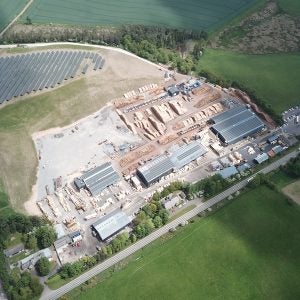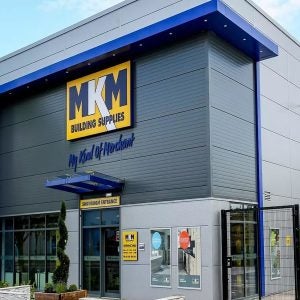This year’s Trussed Rafter Association (TRA) AGM was a thought-provoking and information-filled event giving the members much to reflect on. It kicked off with an inspirational account from Mollie Hughes, the youngest female Briton to summit Mount Everest. Members then heard from speakers from the NHBC and Barratt Homes covering health and safety, and innovation in housebuilding, respectively. Mark Farmer, author of the Modernise or Die report, gave an insight into where the TRA’s members and activities fit in. A panel made up of the speakers and TRA chairman Jonathan Fellingham rounded things off.
Challenges discussed included competition from panelised roofing systems and the TRA’s struggle to bring new blood into the industry. Offsite construction was recognised as the main opportunity for the TRA. Mr Farmer gave encouragement to those involved with the production of trussed rafters on lobbying government about how these products can help with the housing crisis.
It was announced at the AGM that the TRA had formed a group in Ireland. TRA Ireland consists of seven members covering the Republic and Northern Ireland. The aim of the group is to push standards forward in Ireland and it will be working with authorities such as HomeBond, the National Standard Authority of Ireland and Building Control Northern Ireland. The group also wants to update the House Building Manual, often referred to as the Blue Book.
A JOINED-UP APPROACH
At Ecobuild, the TRA and Structural Timber Association (STA) signed a memorandum of understanding. This collaboration falls in line with the TRA’s commitment to ensure higher quality timber products and better guidance for housebuilders. The two organisations will look at initiatives, including agreeing a common approach to fair payments throughout the supply chain, targeting activity to attract new talent into the engineered wood industry, combined lobbying on apprenticeships and options for a shared CPD (continual professional development) framework to boost industry skills and knowledge. They will also work on boosting health and safety on site, to increase skills and knowledge, and to promote improved technical guidance, certification and product quality.
Last year, technical experts from the TRA’s member firms attended workshops where they gave essential information, technical drawings and images to be used for spandrel panel guidance. In May 2017, the Spandrel Panel Guide for masonry-built homes was released for housebuilders. Working in association with the NHBC, the guidance was designed to reduce risks, costs and waste from poor spandrel construction on sites. The guide will be updated following gable detailing information becoming available and once fire testing results are available in a collaboration with the STA.
TACKLING SKILLS SHORTAGES
Like the rest of the construction sector, the skills shortage is an issue for the roof truss industry. It’s something the membership is tackling as it continues to work alongside the membership and partners such as Edinburgh Napier University.
At the AGM, the TRA announced it would be offering free training for members who completed their training in the following three months. Further training initiatives have included deducting training costs from new membership fees.
In May, two of the highest scoring online training candidates won a trip to Sweden to visit the headquarters of Vida Wood. During the visit the winners got a true feel for how the production process works from felling trees to the live transfer of data to the mill and how the wood is processed in the mill. The winners, who are desk-based designers, saw how their work fits in with the trussed rafter life cycle. This highlights how diverse the industry can be and the different range of skills it needs.
IMPROVING SAFETY
Committed to providing housebuilders with advice and following the success of the spandrel panel guide, the TRA is putting together a gable wall panel guide. Working again with the NHBC, the guidance will provide step-by-step instructions alongside images and diagrams. Like the spandrel panel guide, it will provide housebuilders with the information they need to design and install gable wall panels correctly.
Health and safety is a key issue for the TRA, especially as working at height is the biggest cause of death or injury for construction workers. Working with risk assessment specialists, Paramount Safety Solutions, the TRA is producing an installation guide of roof trusses to help housebuilders. Keeping in line with the other guides, it will give clear instructions accompanied by images and diagrams.
The TRA will soon be launching its new website. Now approaching the finishing stages, the website will offer a better service for customers and represent a more forwardthinking TRA. There will be more video features, content and news updates to better inform website users.
Once the main TRA website is up and running, the TRA Ireland group will have its own website to reflect the work they are doing across the Irish Sea.
Following on from the spandrel panel guide, the TRA will launch a quality assurance labelling scheme in 2018. The badges will offer quality assurance and traceability and will only be available through TRA members. It will make it easier for NHBC and other building inspectors to see that the spandrel panel meets the required standards.
Next year will see more guidance on product design and installation, and the TRA will continue to be an influence in the timber, housebuilding and roofing industries. Further work will be done with the NHBC on technical standards and there will be further collaboration with BRE and the STA






